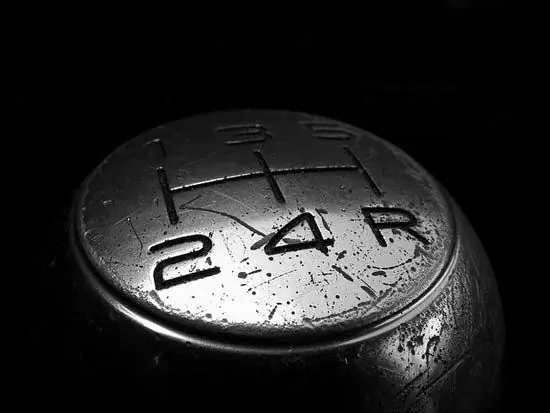- Author Maria Gibbs [email protected].
- Public 2023-12-16 03:05.
- Last modified 2025-01-22 17:48.
A manual transmission usually causes some excitement for beginners as it requires certain motor skills. Let's try to figure out where to start learning to drive a car with mechanics and avoid mistakes.

It is necessary
Actually a car with mechanics, level ground, time and patience
Instructions
Step 1
What is the gearbox used for? In order to transfer torque from the engine to the wheels. Why are there several gears? Because the engine is designed to operate within a specific rpm range. And here is the first nuance: the lower the speed, the weaker the engine thrust. Accordingly, the higher, the greater the engine thrust. On the other hand, low revs help conserve fuel and engine life. Therefore, driving a car with a manual transmission requires certain knowledge of theory and skills. The very first and one of the most difficult is to get under way. The gearbox does not transmit torque all the time: when neutral is engaged, the motor only works to rotate itself. Another device in order to "untie" the motor from the wheels is the clutch. Conventionally, this is a disk pressed with different forces to the rotating part of the engine to change the amount of transmitted torque. This effort is controlled by the clutch pedal. When the pedal is fully depressed, the clutch disc is not pressed against the rotating part of the engine (flywheel), the transmitted force is zero. When fully released, the transmitted force is full. We figured out the theory a little. Let's get down to practice.
Step 2
Sit in the car, adjust the seat and controls for you. Try to push the clutch, brake, gas, turn the steering wheel. With the engine off, change gears several times. The better you get used to the car, the less excitement there will be. The less excitement, the better.
Step 3
Start the engine, fully depress the clutch pedal and engage first gear. This is the same gear in which you need to get under way. It has the highest effort and lowest speed. Remember how in school we lose in distance and win in strength? It's the same here. Next, we press very carefully a little on the gas. Up to about a thousand revolutions. And release the clutch very slowly. Somewhere in the middle of the clutch pedal travel, the car will move. Then we release the pedal even smoother to the end. If the engine speed is too high or if the pedal is not released to the end, there is a risk of ruining the clutch disc - after all, it rubs against the moving part of the engine. It is not particularly worth preserving about this - it was created for this, but you still need to remember these nuances.
Step 4
Usually, beginners can't get under way the first time. Excitement appears, the movements become nervous, and after that there is definitely no need to wait for success. You need to try again, doing everything again smoothly and calmly. Try to catch with the clutch pedal the moment when the engine starts to rotate the wheels - "grabs". You can even hold the pedal in this position for a split second.
Step 5
So, you have learned to get under way over time. Now we need to learn how to change gears. Having slightly dispersed the car on the first one, release the gas and fully squeeze the clutch. Move the lever to second gear and release the clutch. The pedal must be released smoothly, but not as slowly as when starting off, because the car already has a certain speed. We give a little gas and enjoy the increased speed. The same is true with further acceleration and shifting to higher gears.






